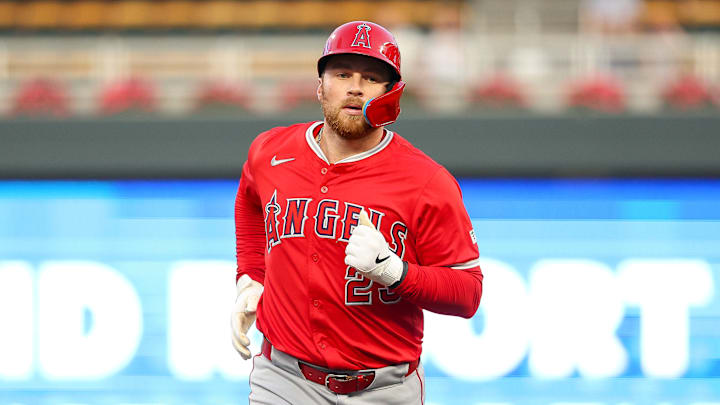The Sox are finally acting like they said they would.
After a wind of offseason signings that exceeded the lowest expectations, the Sox are reaching into the free agent bargain bin to fill out their Minor and Major League rosters. Fortunately, these latest signings aren’t representative of their entire offseason.
Watching the Sox make cringey moves will never be easy, but there are rare occasions where fourth, fifth, sixth, and even later chances pay off. Perhaps one of these guys will turn it around during spring training or after the season begins.
Here are the grades for the three players the Sox added in February...
2B Brandon Drury
Adding Drury is the most random but the most "White Sox" signing for the Sox.
Entering his eleventh season, Drury is coming off his third-worst season where he hit .169/.242/.228 with only 28 runs, 15 RBIs, and four home runs with the Angels. With a -2.0 WAR, he was the worst second baseman in the league in WAR. Although he dealt with a hamstring injury last year, it’s doubtful he would have played better if he were fully healthy.
While his career hasn’t gone as poorly as his 2024 season, he hasn’t stood out in the league.
Drury’s .245/.296/.421 career slash line is at best average, and his career 2.0 WAR doesn’t warrant any applause. His solid defense and versatility as a utility infielder may be useful, but he shouldn’t be given priority for any starting job.
Coming off a poor 2024 season, the Sox need to either tap into his talent in a way no team has ever done or have their hands tied to start Drury.
Although his volatile track record may help at certain points as the Sox go through plenty of highs and lows with prospects coming up, Drury shouldn’t be relied upon. The Sox can’t forget that there’s a reason he’s played for eight teams in eleven seasons, and they should only tap him in after they’ve exhausted all their other options.
Grade: C+
INF Tristan Gray
Also invited to spring training, Gray has demonstrated even less potential than Miguel Vargas.
He has a .152 batting average, a .222 on-base percentage, and a .273 slugging percentage in the 33 at-bats he’s had in the Majors. In the 17 games Gray has played between the Rays, Marlins, and Athletics, he hasn’t shown that he deserves more opportunities.
Gray’s scouting report doesn’t reveal any hidden skills that could help him develop into an everyday starter.
He’s described as a patient hitter, but his struggles with consistency and ability to hit for power are as clear as day. Like Drury, Gray can play anywhere in the infield, but his mediocre fielding doesn’t make up for his hitting problems.
If Drury should only be used as a last resort, Gray should only play if Drury isn’t an option.
As a 2017 13th-round draft pick, Gray has been given plenty of time to work through the farm system and develop the tools needed to put the bat on the ball. Unfortunately, he hasn’t shown he can do that at the only level it matters.
Though hope can never be completely lost, Gray is running out of time for another chance.
Grade: D
CF Michael A. Taylor
On paper, it seems Taylor is at the end of his career.
In three years, he’s gone from slashing .254/.313/.357 with 49 runs and 43 RBIs in 124 games to .193/.253/.290 with 35 runs and 21 RBIs in 113 games. But he’s only 33, the same age as Freddie Freeman.
Taylor is best known for his defense.
Last year he ranked in the 94th percentile in fielding run value and 96th percentile in fielding range. Taylor’s best defensive year was in 2021 when he played for the Royals. He won a Gold Glove Award, recorded the assists and most outs above average as a center fielder, and had the highest range factor per nine innings among center fielders.
He’s no Luis Robert Jr offensively, but Taylor’s defense may compensate for his limited offensive production.
The Sox need a veteran outfield who can at least contribute one of the two, and Taylor’s defense will certainly be put to good use. Whether he takes Robert’s spot or serves as the No. 2 center fielder, Taylor will come in handy more often than expected.
